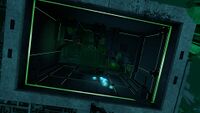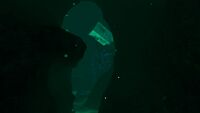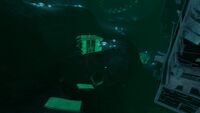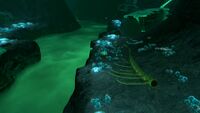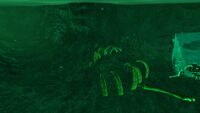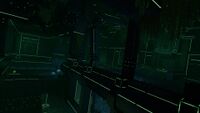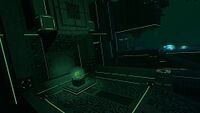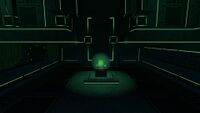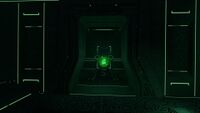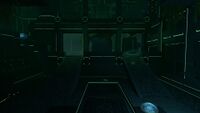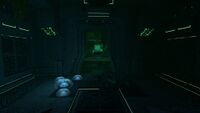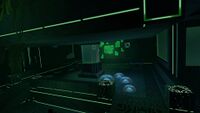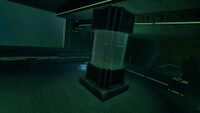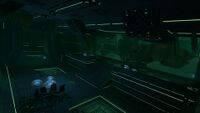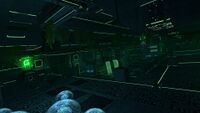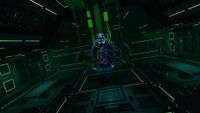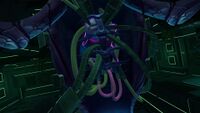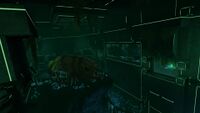Disease Research Facility

|
This seems new This article contains information that is updated for the latest Experimental Version of Subnautica. Players using stable mode may find this information inaccurate. |
<infobox layout="stacked">
<title source="title1"> <default>Disease Research Facility</default> </title> <image source="image1">
</image> <label>Tab</label> <label>Type</label> <label>Biome</label> <label>Cavern</label> <label>Depth Range</label> <label>Biome ID</label> <label>goto ID</label> <label>Coordinates</label> <label>Base ID</label> <label>Music</label> <group> <header>Map</header> <image source="image"> </image> <label>Adjacent Biomes</label> <label>Point of Interest</label> </group> </infobox>
Leviathan detected at facility perimeter, closing at high speed. Exterior wall impacted with large force. Lifeform containment unit 7 (leviathan eggs) breached. General structural integrity compromised. Immediate specimen destruction protocol initiated. 314 specimens destroyed. 1 specimen unaccounted for.
― PDA, Dialogue
The Disease Research Facility (DRF) is an in-development abandoned Precursor Base located next to the Lost River Junction. Built around one thousand years ago, some time before the imprisonment of the Sea Emperor, the main purpose of this facility was to infect creatures with the Carar Bacterium. Surviving specimens were then sent to the Primary Containment Facility for further testing in order to synthesize a cure for the bacterium. Inside the Research Facility you will find what is currently being called a "Biter Leviathan," in a large habitat. It is called such because of it's large size and resemblance to the biter.
This Precursor base is heavily damaged, and unlike the other bases, is completely filled with water. It lies partially suspended by several loose-hanging cables, with several sections of destroyed cables found scattered around the perimeter of the facility. The base was attacked and destroyed by a Sea Dragon Leviathan in an attempt to retrieve its stolen eggs - an event that also unleashed the Carar bacterium into the native ecosystem and prompted the Precursors to initiate their planetary quarantine by activating the Quarantine Enforcement Platform.
The Disease Research Facility was set up partially to study the skeleton in the Bones Field - the remains of a creature stated to be a genetic cousin of the Sea Dragon Leviathan.
Data Bank Entries
<tabber> Disease Research Facility=
|
This device contains functional information regarding a second alien facility on the planet. Disease Research Facility In the event of outbreak, quarantine procedures will be automatically enforced with immediate effect. The ground-to-air weapon will target all incoming and outgoing craft, to prevent the spread of infection offworld. The facility was built at a depth of 700m, approximately 1km south-west of the super weapon. |
|-| Damage Report=
|
Massive internal damage recorded in lifeform containment unit 7 (leviathan). |
|-| Skeletal Remains Found in Alien Habitat=
|
The skeletal remains of a vast predator, discovered inside an artificial habitat at the alien research facility. 1. Habitat: The environment constructed to house the specimen suggests it was kept alive in containment for research purposes for months, or even years. Organic matter indicates the habitat once supported extensive plantlife, though it has since decayed. 2. Cause of Death: Time of death coincides with the facility's abandonment. There is little physical damage to the skeleton, suggesting death from malnourishment or outside interference. 3. Biology: While it shares some skeletal traits with the biter, this fossilized specimen is significantly larger, and features unusual forearms more in common with the sea dragon. It matches no living species encountered so far, indicating it has either faced extinction in the past thousand years, or evolved beyond recognition. |
|-| SDL Egg=
|
This egg casing matches the sea dragon leviathan. |
|-| Sea Dragon Skeleton=
|
This semi-intact skeletal structure features a 99% overlap with that of the sea dragon leviathan, suggesting it is either the same species, or a close cousin. 1. Head Trauma: There is clear evidence of physical trauma to the head. The damage is so severe it must have been received shortly before death, somewhere nearby, likely caused by high speed collision with a solid object. 2. Age: The skeleton has been well-preserved, but calcium decay suggests an approximate time of death around one thousand years ago. Bone growth suggests the creature itself was in the egg-laying stage of its lifecycle. |
|-| Self-Warping Quarantine Enforcer Unit=
|
This lifeform shows signs of heavy genetic modification, and extensive mechanical grafting. It's digestive and pulmonary systems have been replaced by an onboard battery receiving energy directly from this facility and distributing it around the body. Miniaturised phase technology has been implanted beneath the skin and is triggered by the central nervous system, allowing the construct to teleport at will. The brain and central nervous system have been digitally augmented with advanced processing power and remote communications. Assessment: Programmable Hunter/Killer - Avoid |
</tabber>
Future Plans
- Various skeletons of fauna will be found in tanks inside the Disease Research Facility and possibly fauna in suspended animation.
Gallery
<tabber> In Game Screenshots=
Exterior
Entrance from the Lost River Junction
Interior
An Ion Crystal found in the balcony area, right next to the entrance
Another Ion Crystal in the balcony area
Yet another Ion Crystal
A lab with multiple operating tables and an inactive Warper
The inactive Warper
Close up of the Warper's exposed internal structure
An aquarium inside the Disease Research Facility containing the skeleton of an extinct life form
|-| Concept Art=
Disease Research Facility Concept Art by Pat Presley
</tabber>
Trivia
- The former name for the Disease Research Facility was the "Secondary Bio-Research Facility".

